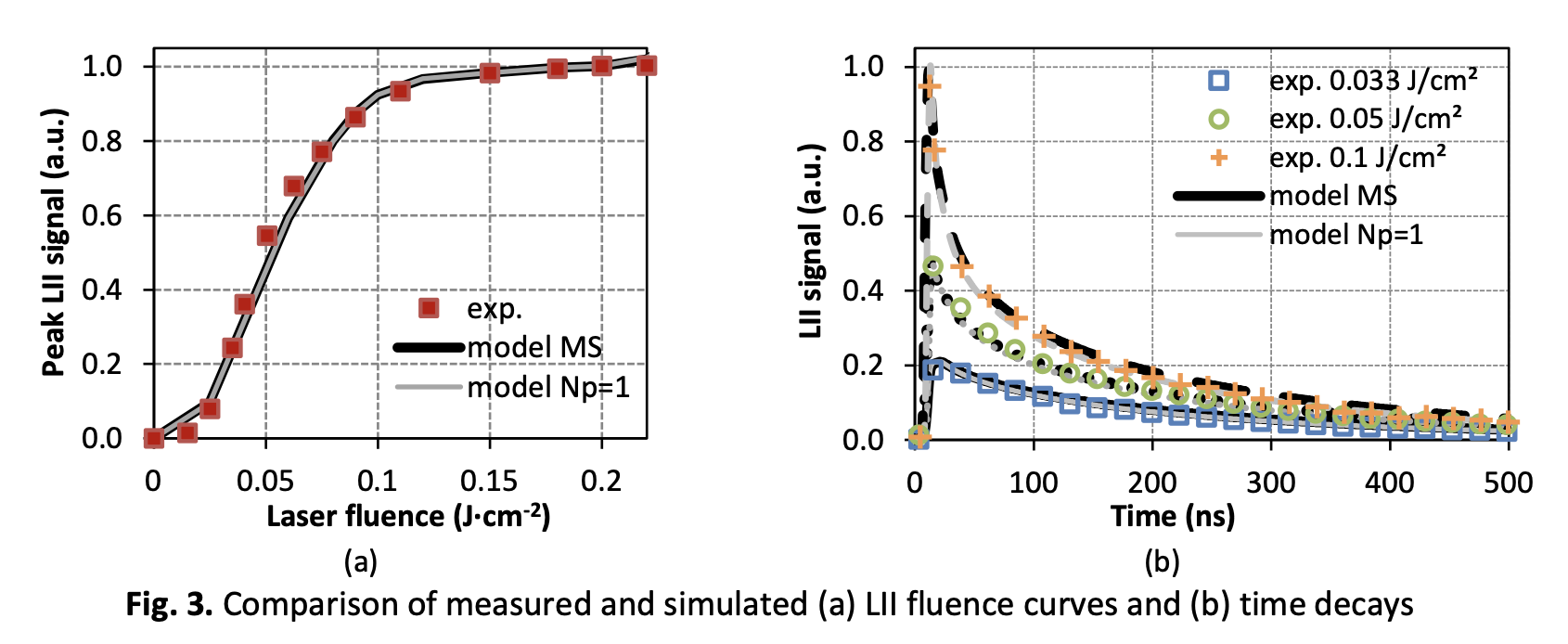Parameterization of a Refined Model Aimed at Simulating Laser-Induced Incandescence of Soot Using a Visible Excitation Wavelength of 532 nm
DOI:
https://doi.org/10.37934/arfmts.98.1.92104Keywords:
Soot, laser-induced incandescence, absorption function, modelingAbstract
Laser-induced incandescence (LII) is one of the most powerful techniques for soot detection in combustion media. It is therefore commonly used to perform experiments in lab-scale flames and industrial combustors with a view to elucidating the formation mechanisms leading to combustion generated fine carbonaceous particles while assessing their intrinsic properties. Quantitatively interpreting LII measurements, however, requires a firm knowledge of the optical properties of soot, including their wavelength-dependent absorption function (E(m)). Among the approaches used to evaluate such a crucial parameter, one can implement a LII model to derive the E(m) value which has to be set to reproduce a series of LII signals measured in a well-characterized environment. In this context, the present work aims at parameterizing a refined LII model built upon a comprehensive version of soot heat-and mass-balance equations for E(m) assessment when using a visible excitation wavelength of 532 nm. The proposed model integrates terms representing the saturation of linear, single-and multi-photon absorption processes, cooling by sublimation, conduction, radiation and thermionic emission, in addition to mechanisms depicting soot oxidation and annealing, non-thermal photodesorption of carbon clusters, as well as corrective factors accounting for the shielding effect and multiple scattering (MS) within aggregates. To parameterize this advanced simulation tool, an optimization procedure coupling design of experiments with a genetic algorithm-based solver was implemented. Doing so allowed to estimate the values of different factors involved in absorption and sublimation terms, including the multi-photon absorption cross-section for C2 photodesorption, the saturation coefficients for linear-and multi-photon absorption, as well as the E(m,532) value. Obtained parameters turned out to be well-suited to reproduce a set of LII signals acquired in a Diesel flame. While leading to predictions merging on a single curve with measured data, the so-parameterized model notably led to infer E(m,532) values of 0.30 and 0.38 when considering or neglecting MS within aggregates, respectively. Finally, the E(m,532)/E(m,1064) ratio estimated based on data collected herein and in a former modeling work was found to be consistent with results issued from two-excitation wavelength LII measurements previously reported in the literature.
Downloads






























